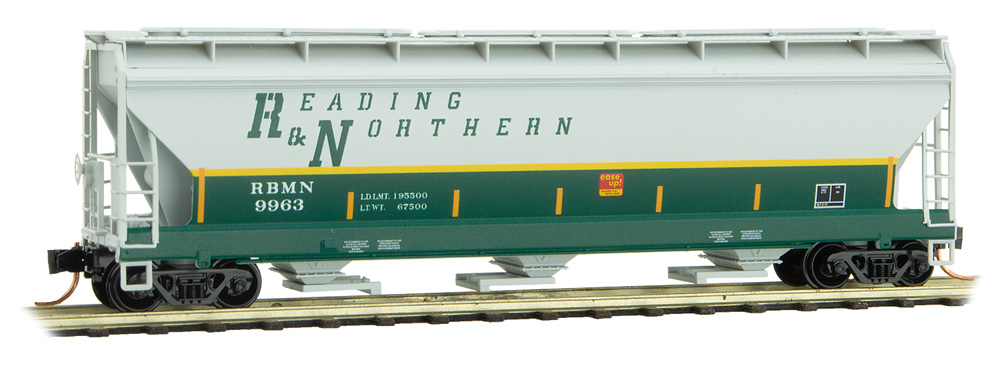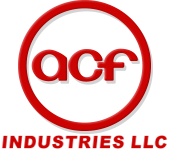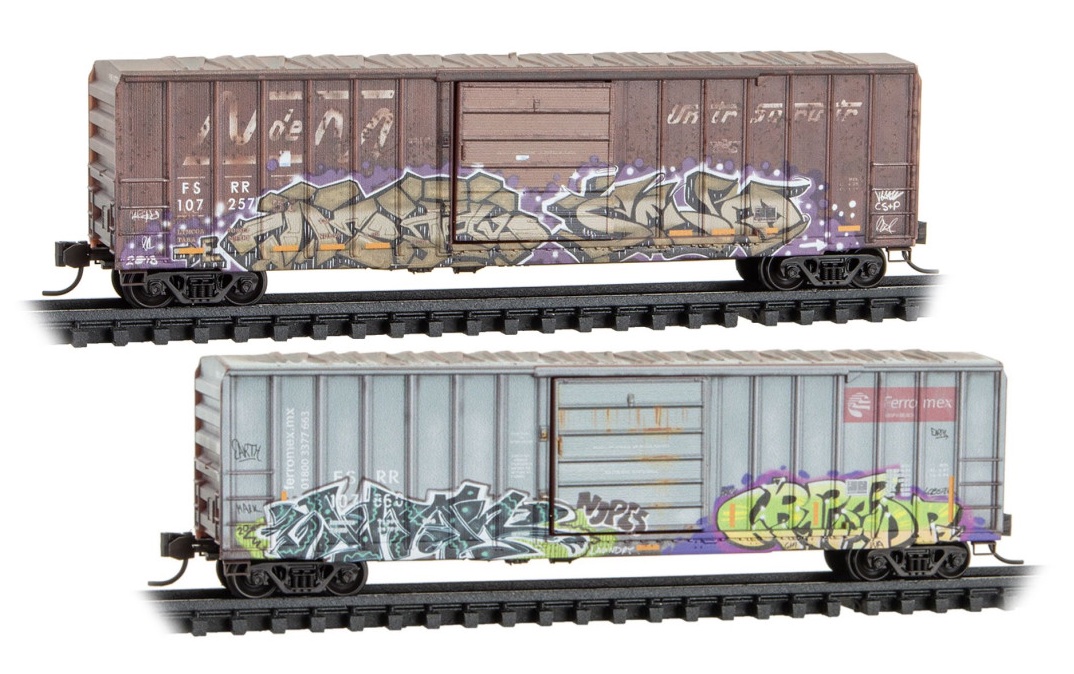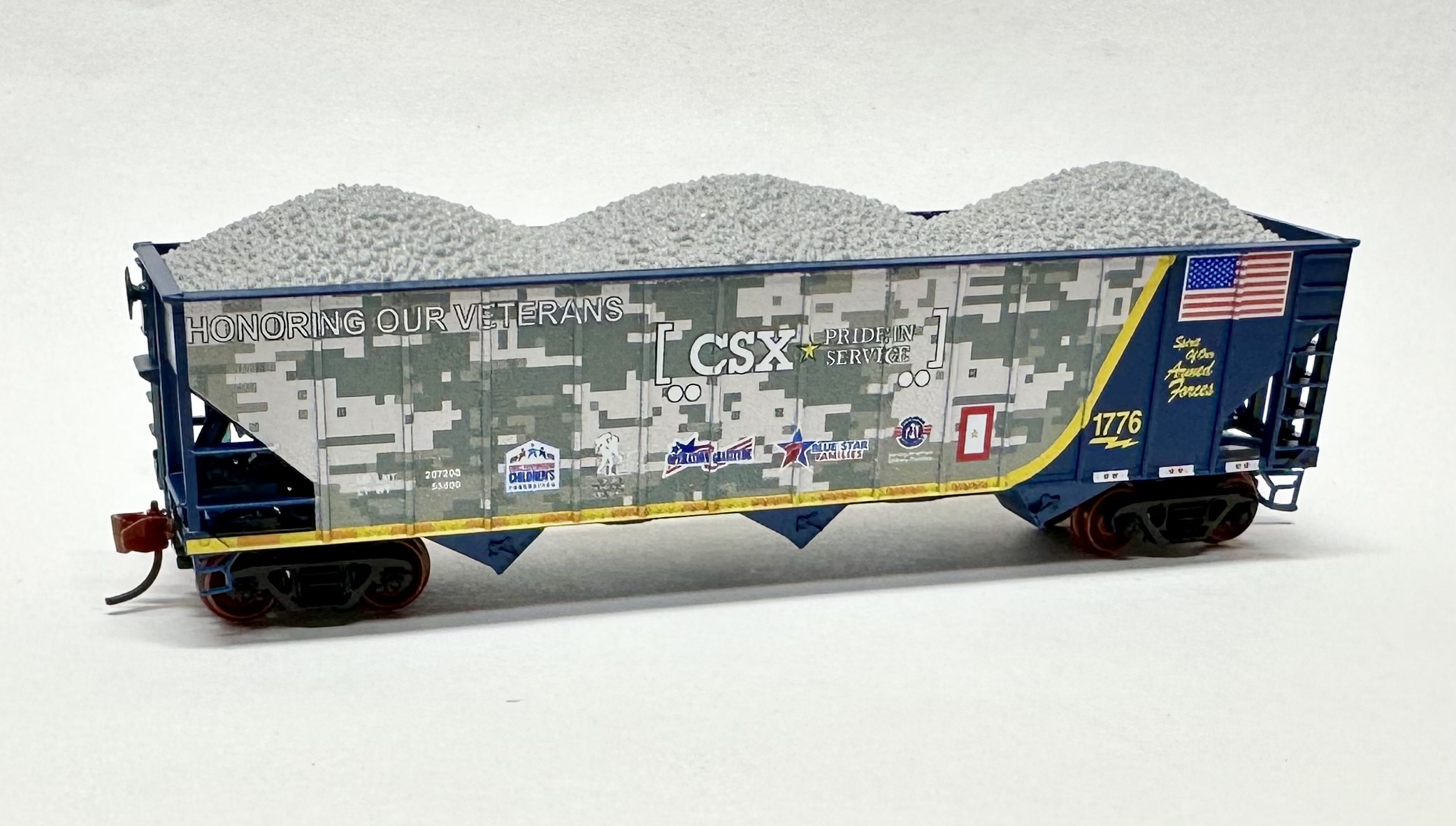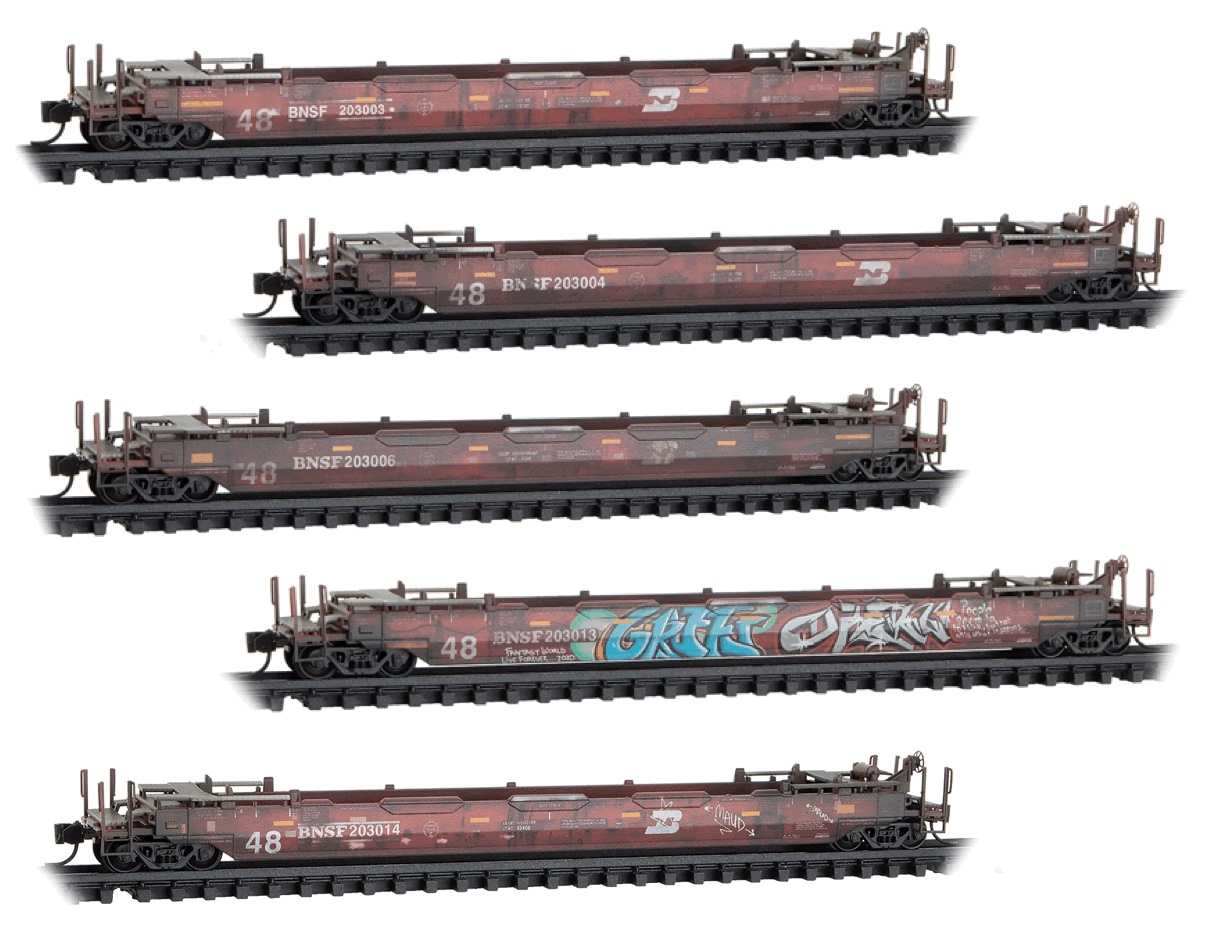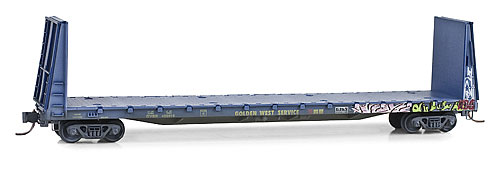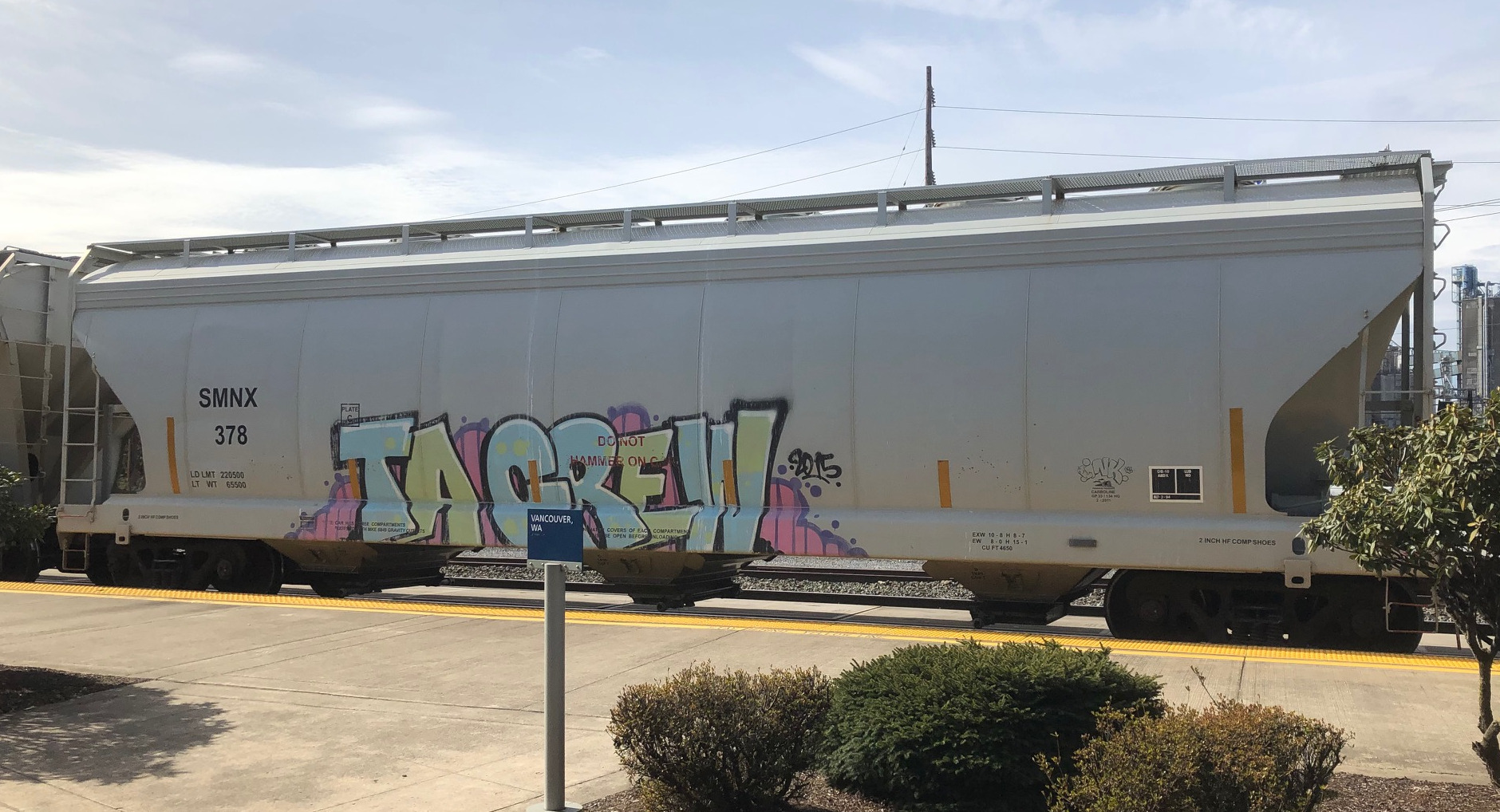Micro-Trains - 094 00 550 - Covered Hopper, 3-Bay, ACF 4650 - Reading Blue Mountain & Northern - 9963
Click to see the details
history
Click to see the details
collector
| Stock Number | 094 00 550 |
| Secondary Stock Number | 094 00 550 |
| Original Retail Price | $29.95 |
| Brand | Micro-Trains |
| Manufacturer | Micro-Trains Line |
| Body Style | Micro-Trains 094 Covered Hopper 3-Bay ACF 4650 Long Hatch |
| Prototype Vehicle | Covered Hopper, 3-Bay, ACF 4650 (Details) |
| Road or Company Name | Reading Blue Mountain & Northern (Details) |
| Reporting Marks | RBMN |
| Road or Reporting Number | 9963 |
| Paint Color(s) | Gray and Green |
| Print Color(s) | Green and White |
| Coupler Type | MT Magne-Matic Knuckle |
| Coupler Mount | Truck-Mount |
| Wheel Type | Injection Molded Plastic |
| Wheel Profile | Standard |
| Announcement Date | 2019-03-01 |
| Release Date | 2019-03-01 |
| Item Category | Rolling Stock (Freight) |
| Model Type | Covered Hopper |
| Model Subtype | 3-Bay |
| Model Variety | ACF Centerflow 4650 Cubic Foot Elongated Hatch |
| Prototype Region | North America |
| Prototype Era | NA Era IV: 2nd Gen Diesel (1958 - 1978) |
| Scale | 1/160 |
Specific Item Information:
This 3-bay covered hopper with elongated hatches is grey with green band and runs on Barber Roller Bearing trucks. Formed in 1983, the Reading, Blue Mountain & Northern is a regional freight railroad operating 300 miles of track in eastern Pennsylvania. Sometimes shortened to just “Reading & Northern,” the railroad primarily transports coal, but also operates a fleet of general service freight cars to service various industries along the way.
Prototype History:
Production of the 4650-cubic foot 3-bay cars began in 1964. ACF built 2504 examples at Huntington, WV, between 1964 and 1972. The ACF 4650 c.f. 3-bay hopper was the same height and width as the 5250 c.f. 4-bay car but several feet shorter in length (and only had 3 bays!). Some railroads that were not concerned about having the larger plate C clearance 4650cf cars (which could not be used on all branchlines or at all loading facilities) opted for large fleets of 4650cf cars instead of 4600cf. UP and SP were two such railroads (all of the current UP 4600cf cars came from either MP or C&NW heritage).
Hatches: 6 30", 6 20", 3 pressed steel elongated (SP, SSW, 3 piece pressed steel continuous or 4 piece FRP continuous. Outlets: Several types of bolted or welded on outlets are used. Uses: Grain, soda ash, platic pellets. Trucks: 77 ton friction or roller bearing. 86 had 100 ton roller bearing.
Hatches: 6 30", 6 20", 3 pressed steel elongated (SP, SSW, 3 piece pressed steel continuous or 4 piece FRP continuous. Outlets: Several types of bolted or welded on outlets are used. Uses: Grain, soda ash, platic pellets. Trucks: 77 ton friction or roller bearing. 86 had 100 ton roller bearing.
Road Name History:
The RBMN was the result of the 1990 expansion and re-organization of the Blue Mountain & Reading Railroad. At first, locomotives were lettered for Reading Blue Mountain & Northern but this was later simplified to Reading & Northern. For most purposes, the company uses the two names interchangeably. Today the RBMN operates 300 miles of line in eastern Pennsylvania (it’s about the length of the Clinchfield or Toledo Peoria & Western.)
The mainline runs north from Reading through Port Clinton, Tamaqua, Jim Thorpe, to Pittston. Branches from Pittston reach Scranton and Mehoopany. There is also a dense network of branches to the west of the mainline in Schuykill County. This is Pennsylvania’s anthracite region and while the golden age of anthracite for home heating is well behind us, it still has important industrial uses and RBMN proudly calls themselves the Road of Anthracite on their Reading influenced black diamond logo.
RBMN has continued the tradition of tourist operations begun by their predecessor and continues to roster the ex-GM&N Pacific and ex-Reading Northern. A former Canadian Pacific 4-6-0 has also been added to the roster. As of this writing, the freight locomotive fleet includes two SD50M’s, two SW8’s, two SW8m’s, an SW7, two SW1500’s, three SD38’s, four GP39RN’s, nine SD40-2’s, and three SD50’s. We will have more Reading & Northern photos with tomorrow's Railroad of the Day.
The mainline runs north from Reading through Port Clinton, Tamaqua, Jim Thorpe, to Pittston. Branches from Pittston reach Scranton and Mehoopany. There is also a dense network of branches to the west of the mainline in Schuykill County. This is Pennsylvania’s anthracite region and while the golden age of anthracite for home heating is well behind us, it still has important industrial uses and RBMN proudly calls themselves the Road of Anthracite on their Reading influenced black diamond logo.
RBMN has continued the tradition of tourist operations begun by their predecessor and continues to roster the ex-GM&N Pacific and ex-Reading Northern. A former Canadian Pacific 4-6-0 has also been added to the roster. As of this writing, the freight locomotive fleet includes two SD50M’s, two SW8’s, two SW8m’s, an SW7, two SW1500’s, three SD38’s, four GP39RN’s, nine SD40-2’s, and three SD50’s. We will have more Reading & Northern photos with tomorrow's Railroad of the Day.
Brand/Importer Information:
Micro-Trains is the brand name used by both Kadee Quality Products and Micro-Trains Line. For a history of the relationship between the brand and the two companies, please consult our Micro-Trains Collector's Guide.
Manufacturer Information:
 Micro-Trains Line split off from Kadee Quality Products in 1990. Kadee Quality Products originally got involved in N-Scale by producing a scaled-down version of their successful HO Magne-Matic knuckle coupler system. This coupler was superior to the ubiquitous 'Rapido' style coupler due to two primary factors: superior realistic appearance and the ability to automatically uncouple when stopped over a magnet embedded in a section of track. The success of these couplers in N-Scale quickly translated to the production of trucks, wheels and in 1972 a release of ready-to-run box cars.
Micro-Trains Line split off from Kadee Quality Products in 1990. Kadee Quality Products originally got involved in N-Scale by producing a scaled-down version of their successful HO Magne-Matic knuckle coupler system. This coupler was superior to the ubiquitous 'Rapido' style coupler due to two primary factors: superior realistic appearance and the ability to automatically uncouple when stopped over a magnet embedded in a section of track. The success of these couplers in N-Scale quickly translated to the production of trucks, wheels and in 1972 a release of ready-to-run box cars.
Micro-Trains Line Co. split off from Kadee in 1990 to form a completely independent company. For this reason, products from this company can appear with labels from both enterprises. Due to the nature of production idiosyncrasies and various random factors, the rolling stock from Micro-Trains can have all sorts of interesting variations in both their packaging as well as the products themselves. When acquiring an MTL product it is very important to understand these important production variations that can greatly enhance (or decrease) the value of your purchase.
Please consult our Micro-Trains Collector's Guide

Micro-Trains Line Co. split off from Kadee in 1990 to form a completely independent company. For this reason, products from this company can appear with labels from both enterprises. Due to the nature of production idiosyncrasies and various random factors, the rolling stock from Micro-Trains can have all sorts of interesting variations in both their packaging as well as the products themselves. When acquiring an MTL product it is very important to understand these important production variations that can greatly enhance (or decrease) the value of your purchase.
Please consult our Micro-Trains Collector's Guide
Item created by: gdm
on 2019-02-28 09:14:29
Last edited by: George on 2024-01-26 20:29:10
If you see errors or missing data in this entry, please feel free to log in and edit it. Anyone with a Gmail account can log in instantly.
Last edited by: George on 2024-01-26 20:29:10
If you see errors or missing data in this entry, please feel free to log in and edit it. Anyone with a Gmail account can log in instantly.


